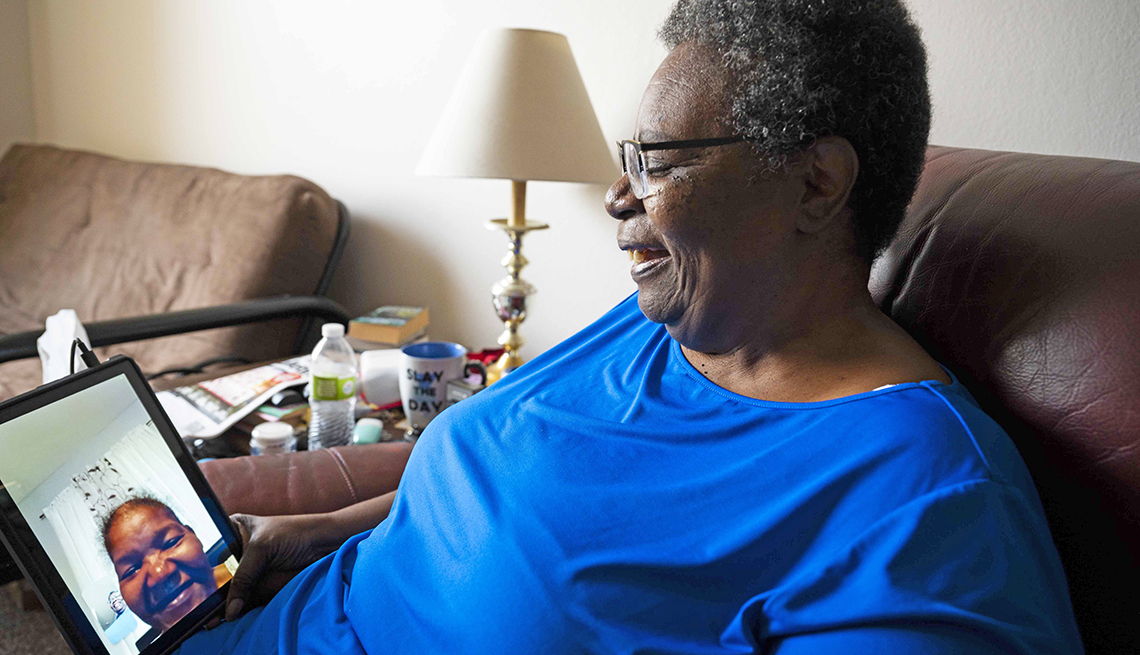AARP Hearing Center

Loretta Woodmore of Rochester uses her high-speed internet to chat with her siblings via FaceTime, play games online, watch moves and scroll through Facebook and TikTok.
Without broadband, “I would be totally lost,” says the 68-year-old former machine operator.
AARP Minnesota is working to ensure more Minnesotans — especially those 50 and older — can harness the power of broadband. It’s vital for everything from entertainment to accessing reliable information, says Jay Haapala, AARP associate state director for community engagement.
“It’s completely intertwined in all of our lives, and older people need it just like everyone else,” he says.
Nearly 22 million Americans 65 and older—or about 42 percent—lack home internet, according to a 2021 report published by Older Adults Technology Services from AARP, known as OATS.
The federal infrastructure law that passed in 2021 allocated more than $40 billion to states to expand affordable broadband access, including training that goes beyond how to use a computer. “Technology is advancing so fast that people need not just the skills to use it today, but to adapt to what’s coming down the pike tomorrow,” Haapala says.
Tech Classes for 50-Plus
Bree Maki, executive director of the Minnesota Office of Broadband Development, says early estimates show the state could receive approximately $750 million in federal broadband money over the next several years.
In Minnesota, a 2022 report from the Governor’s Task Force on Broadband showed that more than 291,000 households are unserved, meaning they don’t have internet at home or have very slow connections. One in 3 of those are rural households. (To check your speed, go to fast.com.)
Maki’s office received an initial $881,000 grant from Washington in November to develop a digital equity plan. As part of that work, the agency has awarded 68 grants of up to $4,000 each to various entities to set up “digital connection committees.” The committees are gathering information about local digital inclusion and other data.
The broadband office will use the findings to help determine how and where to invest the federal infrastructure and training funds. “People aged 60 and older are one of the targeted populations that we’re really encouraged to work with, as well as low-income households and people with disabilities,” Maki says.
OATS uses a licensing model to share its flagship Senior Planet technology training program for free with community organizations, such as East Side Neighborhood Services in Minneapolis.
East Side, a social services nonprofit, used a state grant to buy 12 laptops and to train staff, says Jennifer Grilliot, a program director. The initiative began offering free Senior Planet workshops and classes for adults 55-plus in April.
“People realize their survival may depend on using technology if they want to get groceries ordered, visit with their doctor or see their grandkids,” Grilliot says.
To learn more about Minnesota’s efforts to expand broadband, visit mn.gov/deed/programs-services/broadband. Learn more about the OATS licensing program by visiting oats.org/licensing or explore free technology training classes at seniorplanet.org.
Mary Van Beusekom is a writer living in Minnesota.
More on Technology































































